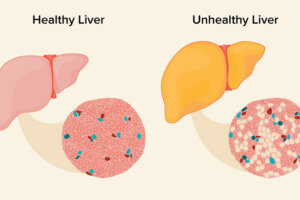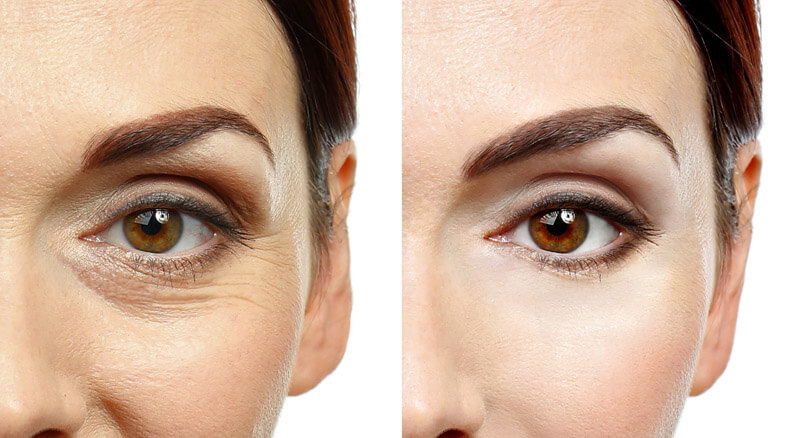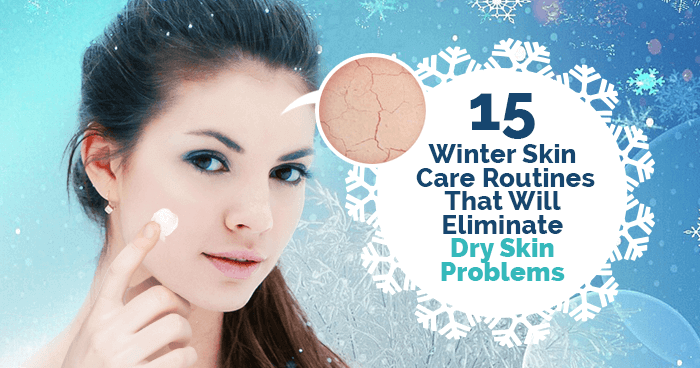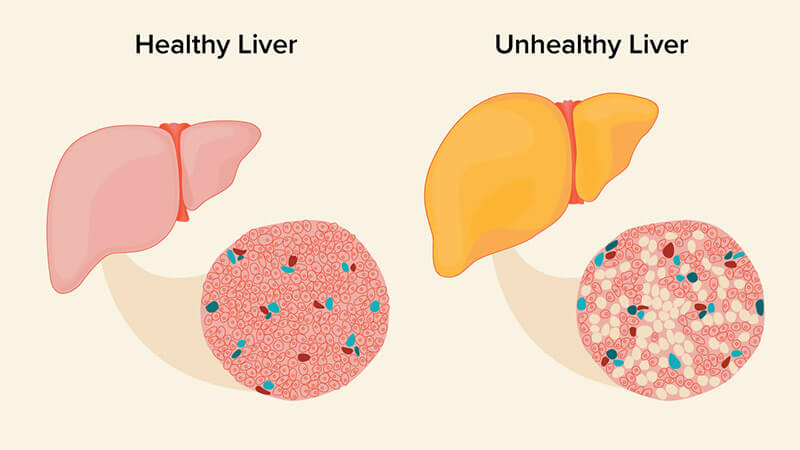Winter is approaching fast. That might be good news if you like building snowmen and sipping hot chocolate, but it’s not such good news for your skin. Winter weather, with its frigid temperatures and dry air, is notoriously harsh on all types of skin, from dry to oily. If you don’t take the right precautions, you might find that your face becomes especially dry, chapped, or irritated once the cold weather sets in. Fortunately, though, you can prevent the worst of the damage by making some changes to improve your winter skincare routine. These tips will help you keep your skin happy all winter long.
- Know your skin type.
Is your skin dry and flaky, or does your face turn into an oil slick by afternoon? Skin type plays a big role in determining what kind of skincare routine you need. Most people have either dry, oily, or combination skin. Dry skin tends to feel tight, and without a proper moisturizing routine, you might notice it getting flaky. If you have oily skin, on the other hand, you might struggle with clogged pores or a shiny face. The majority of people have combination skin, which most often means an oily T-zone (forehead, nose, and chin) with dry cheeks. If you have combination skin, you might need to experiment a bit to see which skincare routine works best for you.
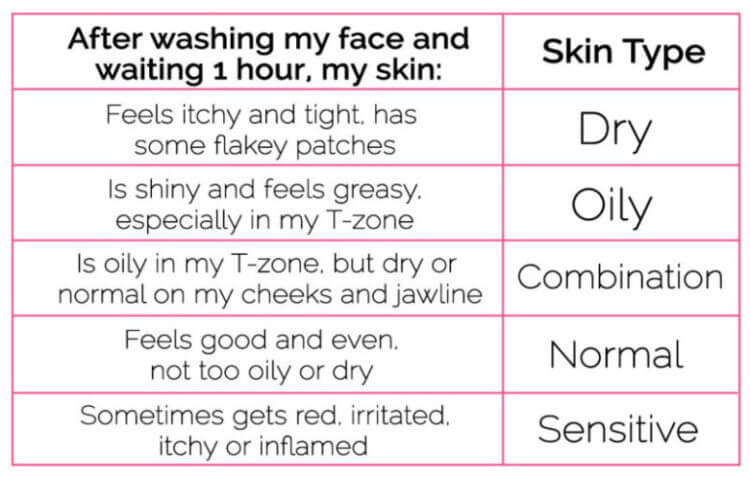
- Use a gentle cleanser.
A mild, gentle cleanser is usually your best bet for winter, regardless of your skin type. Avoid harsh, soapy cleansers that produce a lot of lather – these contain ingredients that can strip precious moisture from your skin, leaving it dry and irritated. Cleansers that don’t foam at all are the best choices. Look for one that contains moisturizing ingredients, such as aloe.
- Find the right moisturizer for you.
You’ve probably heard that you should use a rich moisturizer during the cold, dry months of winter. That’s good advice for some people, but it won’t work for everyone. It’s true that people with dry skin can benefit from using heavier, oil-based lotions or creams during the winter. For people with oily skin, though, using heavy moisturizers could just lead to more oil and breakouts.
The solution? If you’ve got oily or combination skin, look for a water-based moisturizer, which provides much-needed hydration but won’t clog your pores. If one water-based moisturizer isn’t doing the job, try layering a light hydrating serum underneath it.
- Cover your skin whenever possible.
Your skin will dry out and get chapped quickly if it’s exposed to the elements. The best way to avoid this is to simply protect your skin as much as you can. Gloves and scarves are a good first line of defense against chilly air – if it’s really freezing out, you can cover the lower half of your face with the scarf, not just your neck. If you have to spend time outside frequently in the winter, a balaclava can be a skin-saver, too.
- Use a humidifier in your house.

Chilly temperatures are hard on your skin, but the dry air of winter is even worse. It zaps moisture from your skin, leaving it flaky, dull, and prone to irritation. You may not be able to do anything about the dryness of the air outside, but you can use a humidifier inside. A humidifier adds moisture to the air, creating an environment that’s gentler on your skin.
- Take short, lukewarm showers.
A long, hot shower might feel good on a cold day, but it’s bad for your skin. Hot water strips the natural oils out of your skin, leaving it feeling dry and tight. A quick, lukewarm shower might not feel as luxurious, but it will leave your skin feeling much healthier. Don’t forget to apply body lotion right after you towel off, while your skin is still damp – that will help to lock in moisture.
- Stay hydrated.
Keep your skin hydrated from the inside by drinking plenty of water every day. A good minimum to aim for is eight cups (or half a gallon) daily. Hate drinking anything cold when the temperature outside is below freezing? Brew up a pot of decaffeinated or herbal tea – it’s delicious, soothing, and just as hydrating as plain water.
- Eat a healthy, varied diet.

Your diet affects the way your skin looks and feels. Be extra kind to your complexion this winter by filling your plate with fresh fruits and vegetables, lean meats, and healthy fats. Avoid greasy foods and anything with processed sugar in them – junk food can cause dull skin or breakouts any time of year, not just in the winter. Taking vitamin E supplements will also help keep your skin hydrated from the inside.
- Avoid using any drying products on your skin.
Some ingredients, like alcohol, witch hazel, and mint can really dry out your skin. Products containing these ingredients might be fine to use during the summer months, but in the winter, it’s better to put them away and find something gentler to use. As a general rule, products made for sensitive skin are less likely to contain drying ingredients.
- Use overnight moisturizing treatments.
Nighttime is when dry, damaged skin repairs itself. Give it a helping hand by using an especially rich, hydrating moisturizer right before bed. Look for night creams that contain glycerine or vitamin E. If you’ve got oily skin, don’t overdo it – start by using your night cream twice a week to see how it affects your skin. If you’ve got dry skin, though, you may be able to use your night cream every night.
- Avoid wearing too much makeup.
Makeup can help you hide red, irritated skin – for a while. Unfortunately, though, it usually just makes the problem worse in the long run. A full face of makeup on top of extra-dry or oily skin can lead to flakiness, clogged pores, and breakouts. Apply your makeup with a light hand in the winter, and stick to powder-based skin makeup instead of cream formulas. It’s also a good idea to look for makeup labeled non-comedogenic, which means it won’t clog your pores.
- Exfoliate – but not too much.
Exfoliation can be tricky in the winter. If you don’t exfoliate enough, the buildup of oil and dead skin can cause breakouts. Too much exfoliation, on the other hand, can dry out and irritate your skin. The right amount of exfoliation depends on your skin. If you’ve got dry skin, you should exfoliate only once or twice a week, but if you’ve got oily skin, you may be able to exfoliate every other day. Steer clear of harsh chemical exfoliants during the winter and use a gentler product, such as a sugar scrub, instead.
- Make your own moisturizing masks at home.
A homemade mask can go a long way toward soothing your dry skin and replenishing lost hydration. Honey, plain yogurt, egg yolks, aloe, avocado, and sweet almond oil are all effective and gentle moisturizers for the skin, and you’ve probably got at least one of these ingredients in your house already. Mix any ingredients you like together in a bowl and pat the mixture onto your face. Let your skin drink it in for fifteen to twenty minutes, then rinse it off.
- Avoid using clay masks.
Unlike moisturizing masks, clay masks aren’t a good idea in the winter. That’s because clay tends to draw moisture out of the skin, making it feel tight and dry. Stick to moisturizing skin treatments for now, and save the clay masks for springtime.
- Don’t forget about your lips and hands.
Most skincare tips tend to focus on the face, but winter can take a toll on your lips and hands as well. Wear gloves when you go outside to protect your hands from the elements and invest in a good lip balm and hand cream this winter to prevent chapping and cracking. Lip balm, in particular, is easy to carry with you and reapply as needed.
Wrapping Up
Winter can be hard on your skin. With a little TLC, though, you can protect your skin and keep it from drying out once the temperature drops. If you treat your skin gently and start a moisturizing regime that’s right for your skin type, your skin will stay healthy and hydrated through the winter.



